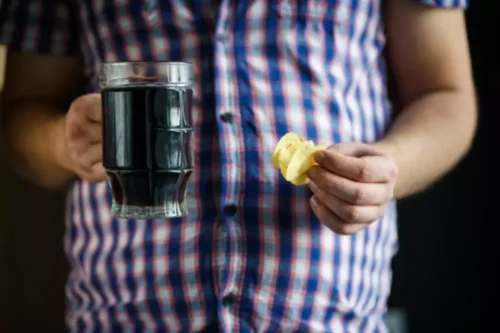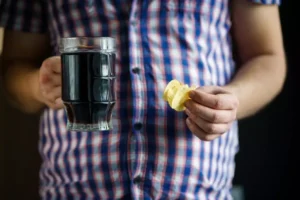
Outpatient treatment enables patients to practice recovery skills immediately in a real-life setting. Depending on the level of treatment selected, it can allow patients to maintain work or school commitments. And it facilitates involvement of the family in care, a factor known to enhance recovery. Residential care removes people from problematic environments, maladaptive lifestyles, and the inducements to drug use they hold. While it can minimize the immediate temptation to use a substance, it doesn’t automatically confer skills needed for managing recovery under the pressures of everyday life.

Prepare to Change
- That’s what professional therapy tries to do, he observes, but AA does it in a more accessible and obviously less expensive way.
- Understanding why you relapsed is often one of the most important parts of truly overcoming a substance use disorder.
- Primary care and mental health providers can provide effective AUD treatment by combining new medications with brief counseling visits.
- While no single treatment method is right for everyone, recovery is possible, and help is available for patients with SUDs.
- The inability to stop or control drinking can throw lives into chaos and do serious harm to relationships and the person’s ability to live a productive, healthy life.
Once you are clear on your goal, you may still need to prepare to change. Preparations include removing addictive substances from your home as well as eliminating triggers in your life that may make you more likely to use those substances again. Feelings of sadness, lack of how to treat alcoholism energy or trouble sleeping can be common occurrences that individuals experience in their daily lives. Losing a job, the death of a loved one or the end of a relationship can naturally cause feelings of grief. And often, people may use the word “depressed” as a way to verbalize how they are feeling. SMART Recovery is a programme of training and tools to support recovery from addiction.
How long does addiction treatment last?
The health consequences of alcohol use in the elderly are profound. In addition to the risk of falls and injuries, there are increased odds of developing cognitive issues, mood disorders, and weakened immune systems. Additionally, excessive alcohol consumption can elevate risks for various cancers. Given these risks, it is vital for healthcare providers and families to monitor and address alcohol use among older adults to protect their health and well-being.
What are the symptoms of alcohol use disorder?
People experiencing SUDs have trouble controlling their drug use even though they know drugs are harmful. One drawback is that you must take two pills three times every day. «If you don’t like taking pills, you already take too many pills, or you aren’t good at remembering to take pills, then this would be a tricky one,» he says. «Medications are the beginning of how you make the psychological change that needs to occur,» says Gerard Schmidt, an addiction counselor and president of the Association for Addiction Professionals. Sunnyside is a private, anonymous way to start improving your relationship with alcohol. These two options can be used in combination and tailored to individual needs.

Remember that changing long-standing patterns is hard, takes time, and requires repeated efforts. We usually experience setbacks along the way, learn from them, and then keep going. You will want to understand what will be asked of you in order to decide what treatment best suits your needs. Ultimately, there is no one-size-fits-all solution, and what may work for one person may not be a good fit for someone else.
- There are many treatment options available today that will help you recover from alcoholism and get back to living a healthy and fulfilling life.
- Nor does it solve the problem that made use of a psychoactive substance so attractive in the first place.
- Like many other chronic conditions, treatment is available for substance use disorders.
- Because naltrexone may interact with certain opioids, patients should refrain from use of illegal opioids and make sure their physician is aware of any medications they are taking.

Finding a therapist can also be a great starting point if you’re uncomfortable opening up to your healthcare professional. Research shows that most people believe that drinking can make them feel better. However, when alcohol makes up part of your typical routine, drinking can become something of an automatic response, especially when you feel stressed or overwhelmed. Nanci Stockwell of The Recovery Village discusses the risks of detoxing at home and the benefits of detoxing from alcohol and other drugs in a safe environment. Others find it painful, difficult, and frustrating, sometimes needing many attempts alcoholism symptoms before achieving their goal.
Cognitive Behavioral Therapy for Alcohol Addiction
He recommended rejecting the idea that acamprosate or naltrexone must be a first-line treatment; instead, he proposes using disulfiram as a first-line treatment. If you suspect that someone may be experiencing an alcohol overdose, call 911 immediately. Each person responds differently to de-addiction programs, https://ecosoberhouse.com/article/how-long-does-fentanyl-stay-in-your-system/ and your doctor or therapist will help you find a plan that works for you. Alcohol consumption causes feelings of euphoria and happiness due to the release of dopamine. Over time, your body starts craving increased levels of dopamine and this can cause alcohol addiction.
- It might also be worth checking out a 12-step program in your area, like Alcoholics Anonymous or SMART Recovery, to see if it feels like something that might be useful for you.
- Among those who do, more than 90 percent “fail” within a single year—if the sole measure is abstinence.
- Therapeutic techniques such as motivational interviewing and cognitive-behavioral therapy (CBT) have proven effective in engaging older patients.
- Ozempic may have better adherence but still reduces drinking like naltrexone and may also reduce cigarette smoking and weight too.
- Many people struggle with controlling their drinking at some point in their lives.
- Millions of adults in the United States have alcohol use disorder (AUD), and approximately 1 in 10 children live in a home with a parent who has AUD.
- For the greatest chance of long-term sobriety after completing an inpatient or outpatient program, you should participate in local support groups and continue with counseling.
Alcohol use disorder

Preparing and anticipating questions will help you make the most of your appointment time. Many people with alcohol problems and their family members find that participating in support groups is an essential part of coping with the disease, preventing or dealing with relapses, and staying sober. Your health care provider or counselor can suggest a support group.
Condition Spotlight
Traditional residential rehab programs usually require a minimum stay of days, but stays of 60 or 90 days are sometimes advised. The danger of relapse is considered most intense during the first 90 days of recovery. Studies show that motivational interviewing helps those struggling with addiction to resolve any ambivalence about giving up drug use and inspires them to commit to behavioral change.
